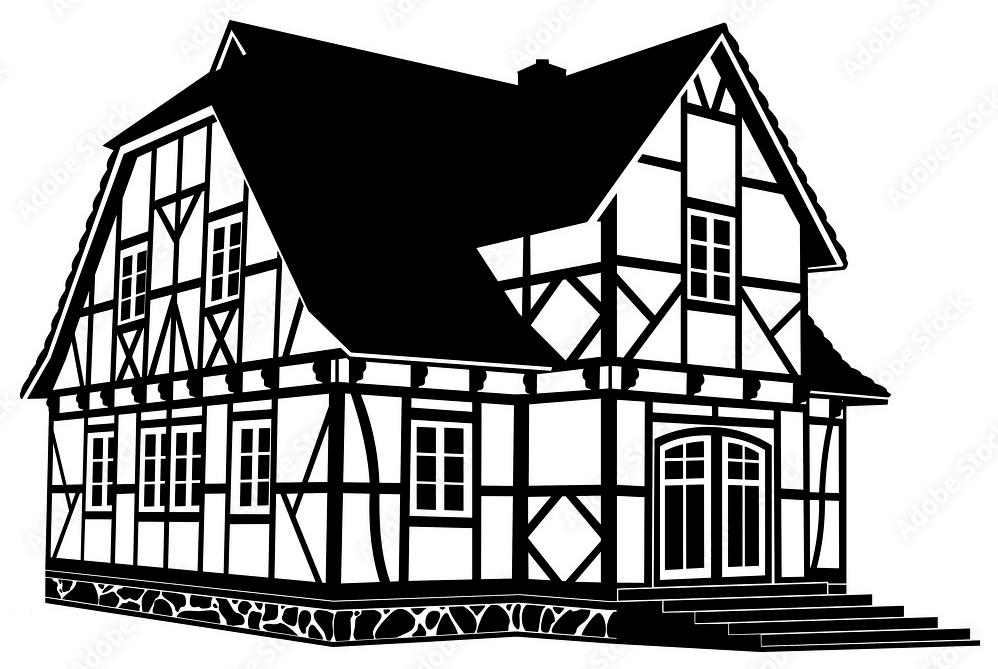Our special building

A building built in 1880
In Germany, you can find many beautiful old buildings that have been constructed in half-timbered style. Some of the cities well known for the most beautiful half-timbered buildings (for example Quedlingburg) are even located in the Harz.
Half-timbering is an old-fashioned building construction in which the walls of a building are composed of a framework of wooden beams that form compartments, which are then filled with masonry or wickerwork of branches over which loam is spread.
Although you can’t see it from the outside, our house is also a half-timbered house. Protective sheeting covers the characteristic compartmentalisation of wood and brickwork. Fortunately, some of the old elements are still visible in our breakfast room.
At the end of the 19th century, there was a real building boom in the Bad Sacha region, and master bricklayer Friedrich Pfeiffer from Walkenried wanted to get a piece of the pie by buying several plots of land near the Schmeltzteich where he built several houses, always called "Villa Pfeiffer". As soon as one was finished, he sold it and quickly built the next house. In 1880, Friedrich Pfeiffer built the property at 20 Bismarckstraße, which he initially operated as "Cur- und Logierhaus - Villa Pfeiffer". In 1890, the hotelier Karl Roeder took over the house and sold it to Gustav Paulmann in 1901. Gustav Paulmann built the hotel "Fürst Otto von Bismarck", today's "Haus Bismarck", on the adjacent plot in 1906.
Around 1935 "Villa Pfeiffer" is renamed into "Pension Raschke", which had 14 beds. In 1965, in the ownership of the ladies Kummer and Maercker the house was renamed again into "Haus am Schmelzteich". In 2017 the house got another new owner, Thomas Neubert, who renamed it "Haus am See". In 2022, we became the owners.
This fantastic property with now 9 rooms and 23 beds has been a place where people love to spend their holidays and relax for almost 150 years.
So our property was built in 1880. That's around the time the car was invented. That brings a few challenges, such as energy consumption, for example. More on that in this article.
